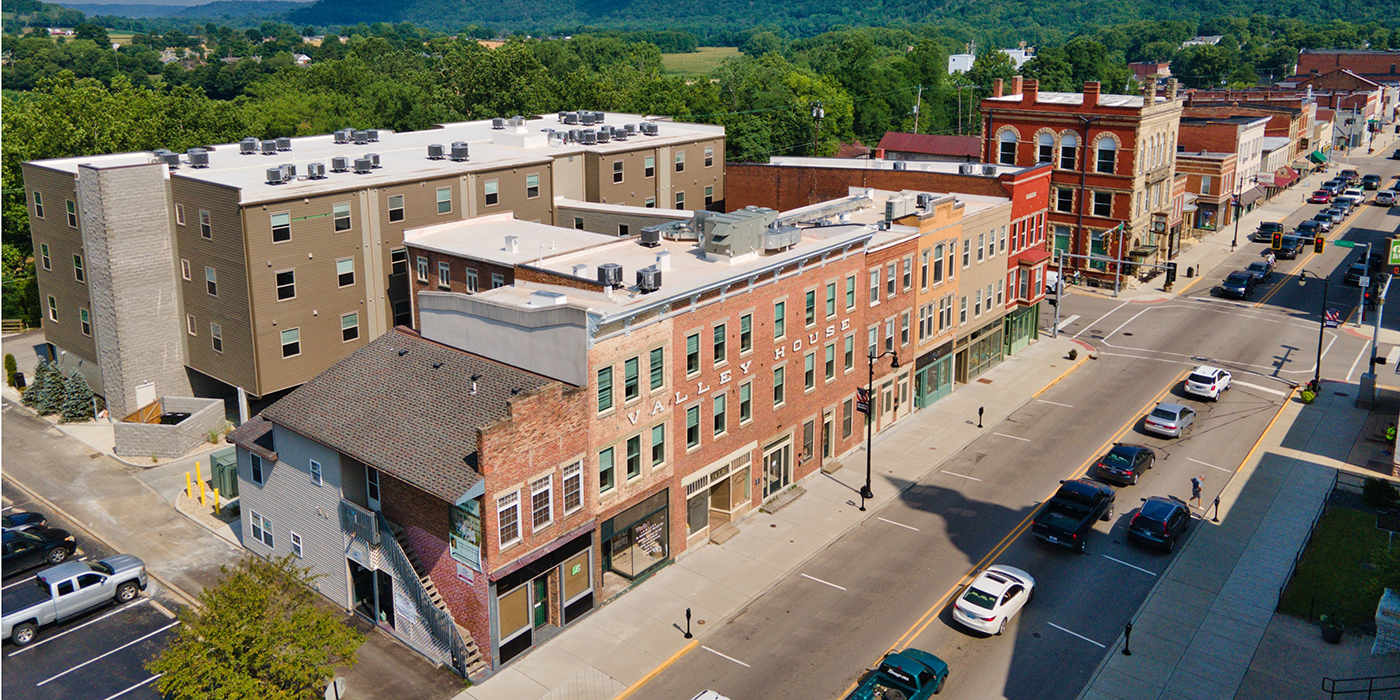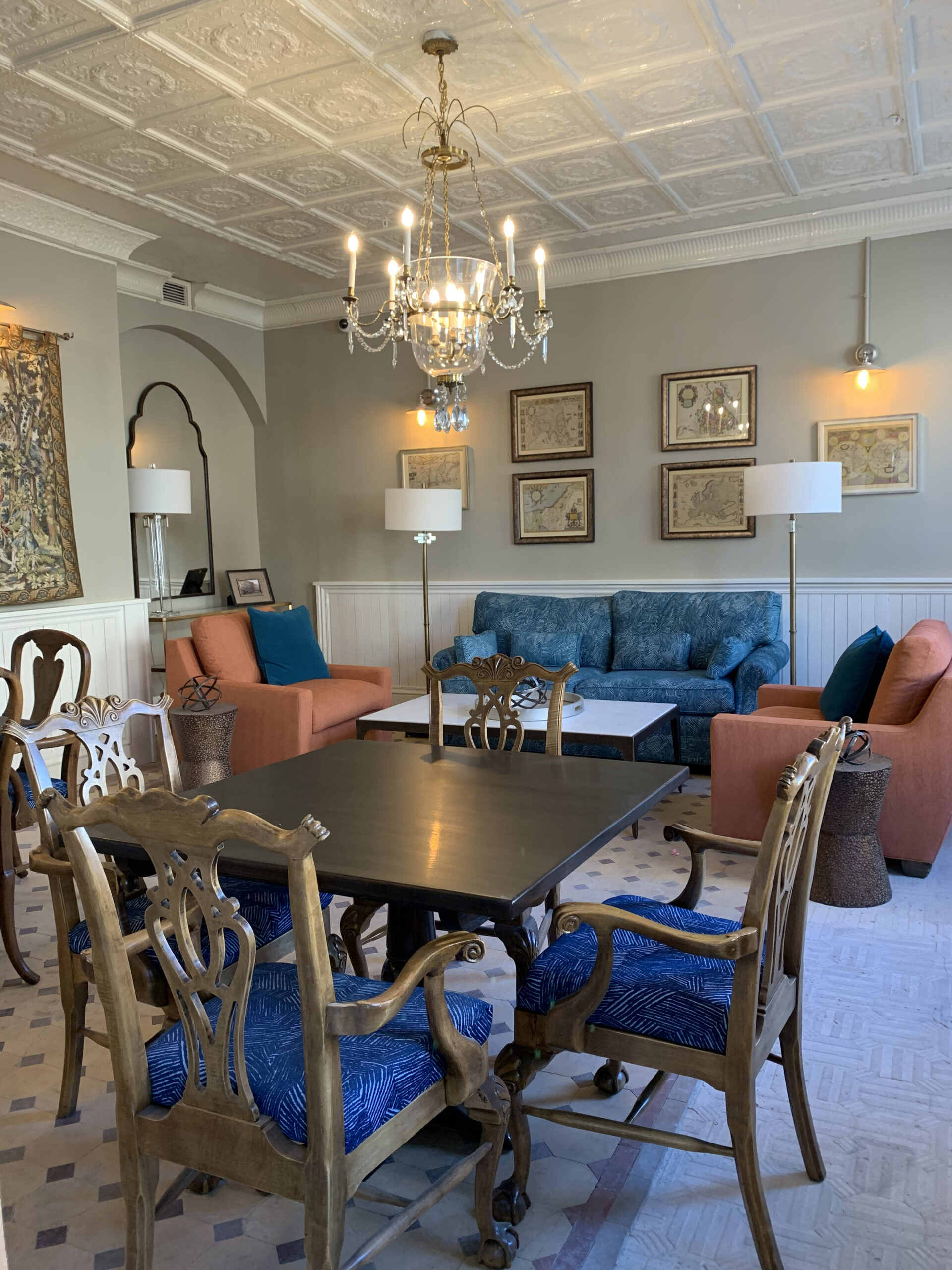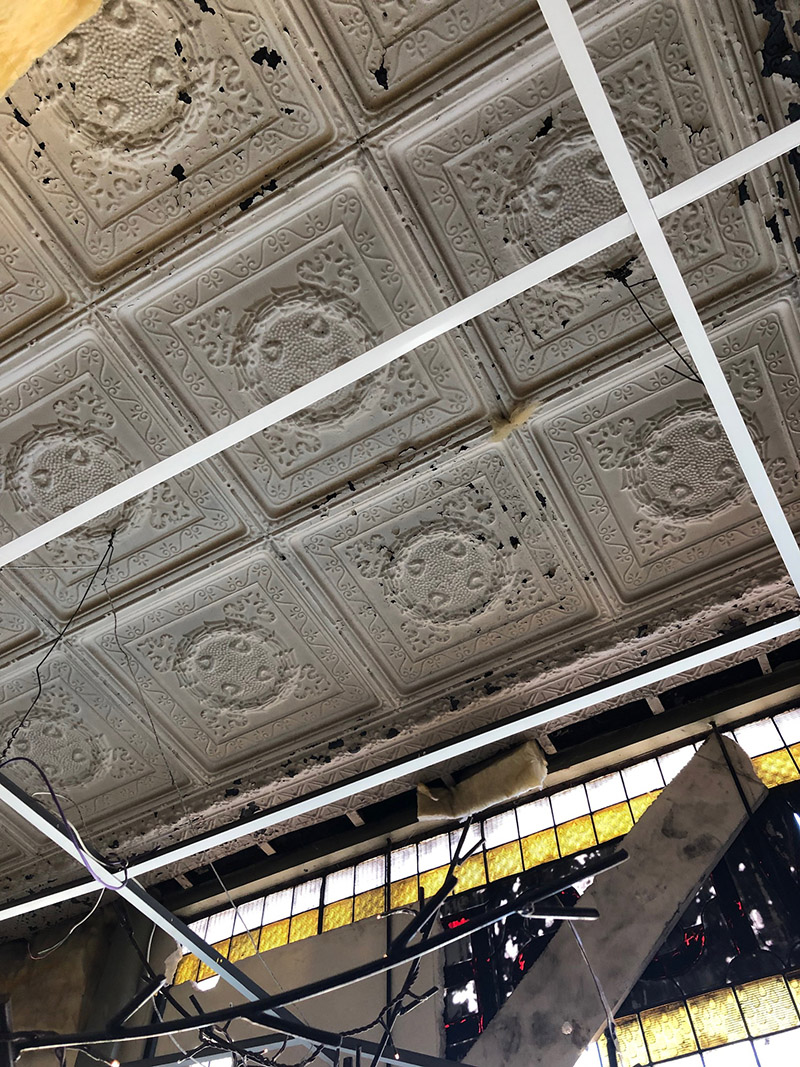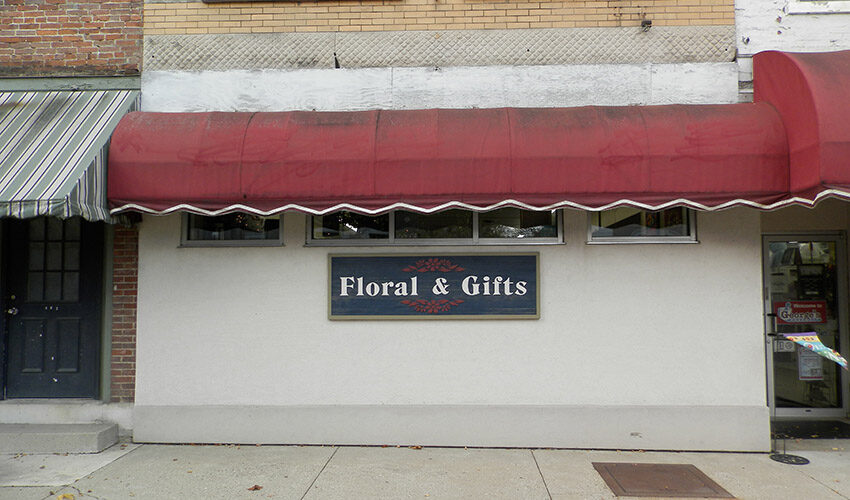NEWS
Bringing Back Brookville’s Valley House
An $11 million development revitalizes a long-vacant landmark on Brookville’s courthouse square and becomes the state’s first project completed using Opportunity Zone funding.

Golden Opportunity
For more than 160 years, the Valley House Hotel has anchored a commercial block on Brookville’s Main Street across from the Franklin County Courthouse. Once a popular overnight stop for passengers traveling between Indianapolis and Cincinnati, the long-vacant hotel earned notoriety in recent decades for its state of disrepair. Last year marked a turnaround for the site and the surrounding block, revitalized and reopened as Valley House Flats, an $11 million development and the first project in the state completed using Opportunity Zone funding.
Much of the block including the Valley House dates to 1852, built after a devasting downtown fire destroyed the previous buildings and adjacent county courthouse. Opened in December 1852, the hotel became a hub for traveling business leaders, government officials, and dignitaries, with author and General Lew Wallace, Indianapolis Mayor Charles Bookwalter, and presidential nominee William Jennings Bryan among its famous guests.
By the time it closed in the 1970s, the Valley House reportedly claimed status as Indiana’s oldest continuously operating hotel. In 1991, however, blighted by two decades of vacancy and neglect, the hotel earned a spot on Indiana Landmarks’ inaugural 10 Most Endangered list. A Connersville businessman bought the building, but his plans for its reuse never materialized. Stalled developments in the intervening years left the hotel foundering.
Looking for a solution to save the landmark, town leaders and business owners reached out in 2014 to Bruce Rippe, a developer with experience adapting historic buildings and creating affordable housing in other small towns. The proposed development aimed to save the Valley House and renovate six historic commercial buildings on the block as a mix of affordable and market-rate apartments for seniors. At ground level, plans called for retail and other amenities, including installing a new restaurant and renovating an existing pharmacy at the block’s north end.
“You couldn’t ask for a better location in a downtown area, with plenty of places to walk and shop within walking distance, which makes this kind of housing attractive to people who want to age in place,” notes Rippe.
Fortuitously, floor levels across the buildings lined up within six inches, making it possible to create connecting hallways that could be accessed by a shared elevator. Workers preserved historic architectural elements, including a grand staircase in the former hotel, pressed-metal ceilings, tile, and original woodwork and floors. At street level, the historic storefronts received a facelift, exposing long-hidden cast-iron columns and a prismatic glass transom with an art glass insert. Low-Income Housing Tax Credits from the Indiana Housing and Community Development Agency and federal Historic Preservation Tax Credits as well as developer equity allowed the affordable housing construction to proceed, but financing difficulties put development of the market-rate apartments on hold.
“In small towns like this, where there haven’t been any new apartments built in 40 years, lenders are apprehensive because of the absorption rate of apartments and overall ability to achieve market rate rents. There’s just no data to support it,” says Rippe.
Around the same time, the State designated Brookville as an Opportunity Zone. Created through the federal Tax Cuts and Jobs Acts of 2017, opportunity zones encourage private investment in rural and low-income communities by deferring federal taxes on capital gains invested in designated areas. Indiana currently has 156 opportunity zones.
In 2018, long-time Brookville residents Mick and Jenny Wilz sold Sur-Seal Gasket, a family business Mick’s father founded in Cincinnati, and were incurring capital gains as a result. They began exploring how investing in Brookville’s Opportunity Zone could benefit the community and liked the idea of helping the Valley House—a landmark whose fate they had both been concerned about over the years. Their contribution through the Opportunity Zone program allowed the development of the market-rate apartments to proceed.
“This gave us the opportunity to really help the community and get to see our money being used, when it would just go to taxes if we didn’t find a project like this,” says Jenny.


The experience encouraged the couple to make other opportunity zone investments, acquiring Whitewater Publications, publisher of the local newspaper located in another historic building on Main Street, and supporting the development of a new area hotel.
Valley House Flats held its grand opening in October 2020, and by early 2021, 34 out of its 47 apartments had been leased.
“In a time of pandemic, when people aren’t feeling very positive, there was so much positivity here last year with the Valley House,” adds Mick.
This article originally appeared in the March/April 2021 issue of Indiana Preservation, Indiana Landmarks’ member magazine.
Stay up to date on the latest news, stories, and events from Indiana Landmarks, around the state or in your area.


